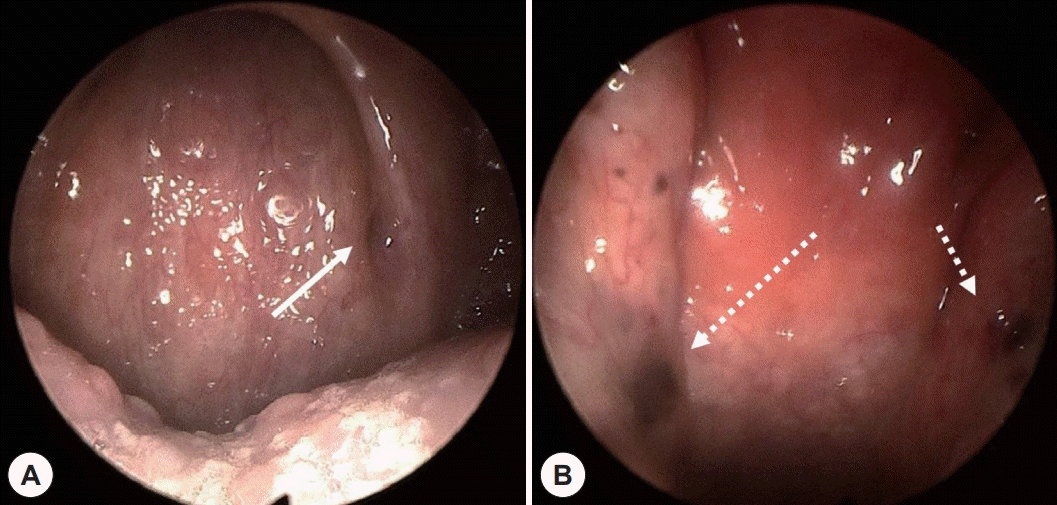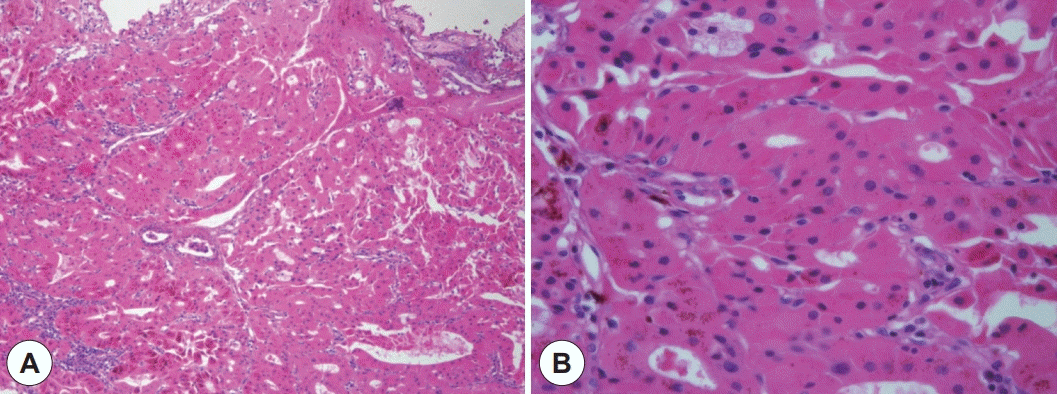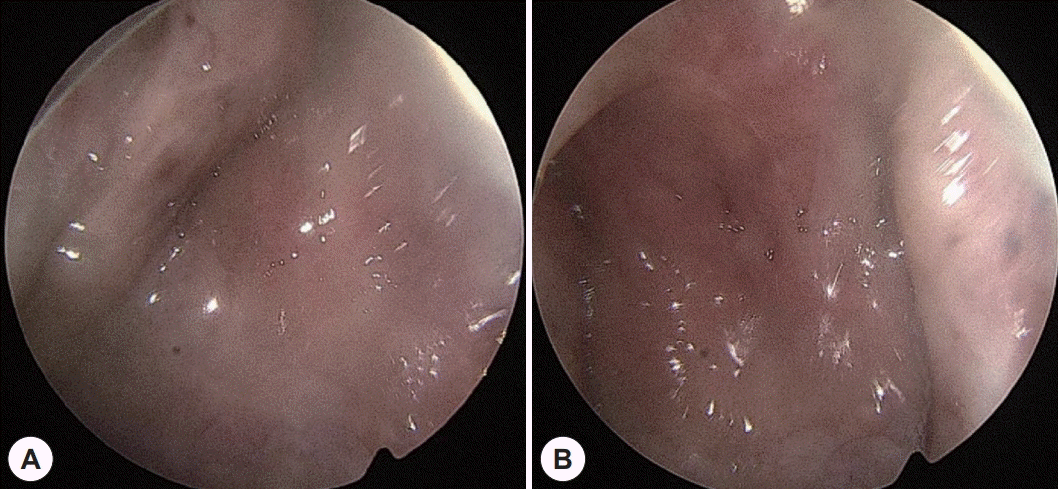1. Shek TWH, Luk ISC, Nicholls JM, Fok KO. Melanotic oncocytic metaplasia of the nasopharynx. Histopathology. 1995; 26(3):273–5.
2. Tajima S, Ohkubo A, Yoshida M, Koda K, Nameki I. Melanotic oncocytic metaplasia of the nasopharynx: a case report with a focus on immunohistochemical analyses and literature review. International Journal of Clinical and Experimental Pathology. 2015; 8(2):2103–10.
3. Antonio C, Pieter J, Nina G, Alessandro F. Pathology of the Head and Neck. 2nd ed. Berlin, Heidelberg: Springer;2016.
4. Mills S. Histology for Pathologists. Philadelphia: Lipincott Williams & Wilkins;2012.
5. Xue WC, Hui YZ. Melanotic oncocytic metaplasia of the nasopharynx. Histopathology. 1999; 35(5):481–2.
6. Hirakawa E, Miki H, Ohmori M, Kobayashi S, Haba R, Nagai Y. Melanin pigmented oncocytic metaplasia of the nasopharynx. Virchows Archiv. 1999; 434(5):455–7.
7. Takano KI, Sato J, Shirasaki H, Yamazaki N, Hoki K, Himi T. Melanin pigmented oncocytic metaplasia of the nasopharynx. Auris Nasus Larynx. 2004; 31(2):161–3.
8. Kurihara K, Nakagawa K. Pigmented variant of benign oncocytic lesion of the pharynx. Pathology International. 1997; 47(5):315–7.
9. Sakaki M, Shek TWH, Hirokawa M, Kashima K, Daa T, Gamachi A, et al. Melanotic oncocytic metaplasia of the nasopharynx: a report of seven cases and review of the literature. Virchows Archiv. 2004; 444(4):345–9.
10. Liao CT, Kuo TT. Melanotic Oncocytic Metaplasia of the Nasopharynx. International Journal of Surgical Pathology. 2005; 13(3):279.
11. Lui PCW, Chan ABW, Chan KF, Choi CH, Tse GMK. Melanocytic and non-melanocytic oncocytic metaplasia of the nasopharynx. Pathology. 2004; 36(5):504–5.
12. Li Y, Lu ZH, Lü W, Chen J. Images for diagnosis. Melanotic oncocytic metaplasia of nasopharynx: a case report with review. Chin Med J (Engl). 2010; 123(9):1230–2.
13. Kondo T, Mori K, Oka S, Morinaka S. Melanotic oncocytic metaplasia of the nasopharynx as a benign mimicker of malignant melanoma: a case report. Diagnostic Pathology. 2010; 5:5.
14. Na JY, Kim YH, Choi YD, Lee JS. Melanotic oncocytic metaplasia of the nasopharynx: a report of three cases and review of the literature. Korean Journal of Pathology. 2012; 46(2):201–4.
15. Chang IW, Wang CC, Liu KW, Lan CH, Hung CH. Melanotic oncocytic metaplasia of the nasopharynx. Polish Journal of Pathology. 2014; 65(2):162–5.
16. Uehara K, Usami Y, Imai Y, Shimizu M. Melanotic oncocytic metaplasia of the nasopharynx. Pathology International. 2015; 65(3):144–7.
17. Li JJX, Ng JKM, Chan ABW. Clinicopathological features of melanotic and non-melanotic oncocytic lesions of the nasopharynx. Pathology. 2019; 51(6):600–4.
18. Chen HY, Gule MF, Chang IW. Melanotic oncocytic metaplasia of the nasopharynx: a case report with review of literature. Ear Nose Throat J. 2020; 145561320907427.





 PDF
PDF Citation
Citation Print
Print




 XML Download
XML Download